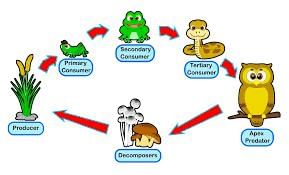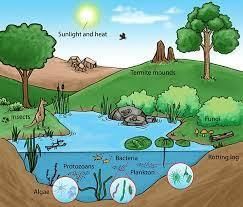Worksheet: Web of Life - 2 | EVS for Class 3 PDF Download
Q1: Multiple Choice Questions (MCQs).
(i) What is included in the biotic component of the environment?
(a) Soil
(b) Wind
(c) Minerals
(d) Animals
(ii) What is the source of the clay used to make bricks?
(a) Mines
(b) Soil
(c) Forests
(d) Oceans
(iii) What does the web created by joining all the things related to us represent?
(a) Our personal preferences
(b) The interdependence of various components of the environment
(c) The food chain
(d) Our family tree
(iv) What are the fundamental building blocks of the environment discussed in this chapter?
(a) Water and air
(b) Biotic and abiotic components
(c) Producers and consumers
(d) Rocks and minerals
(v) In an ecosystem, what do producers, consumers, and decomposers represent?
(a) Different types of animals
(b) Different types of plants
(c) Different types of rocks
(d) Different types of organisms
Q2: Fill in the Blanks.
(i) Abiotic components of the environment include ________, wind and minerals.
(ii) The web created by connecting all the things related to us shows our ________ on them.
(iii) The ________ we get from rivers, ponds, wells, or rain is used to make bricks.
(iv) Food webs are the intricate tapestry where multiple ________ interconnect.
(v) Nature's checks and balances are essential for preserving ________ and maintaining harmony in ecosystems.
Q3: True or False.
(i) Trees are an example of abiotic components of the environment.
(ii) We are all interdependent for our survival.
(iii) All webs created by different individuals will look exactly the same.
(iv) Nature's relationships are simple and straightforward.
(v) The chapter emphasizes that human activities do not have any impact on ecosystems.
Q4: Answer the following Questions.
(i) Let’s see, with what other things can we join the house too. Think – What is a house made of?
- Wood – Which comes from trees.
- Bricks – Which are made from water and clay.
- Clay – We get from the soil, and
- Water – we get it from rivers, ponds, wells, or rain.
(ii) By now, you must have read almost the complete book. You have read about trees, water, houses, animals, vehicles, and many other things. You must have thought about them as well. Can you tell, why did we try to know and think about all these things?
(iii) How are we linked to the things shown in the picture? Come, let us find out –
(iv) Have you joined your picture to the house?
(v) In the same way, join all the things with other things related to them. While doing so, you might need to write the names of a few more things. What have you finally got? A big web! Isn’t it?
(vi) What can you understand from this web?
(vii) Share your web with your friends. Also, have a look at the web made by your friends. Are they all alike? Discuss with your friends.
You can access the solutions to this worksheet here.
|
45 videos|182 docs|48 tests
|
FAQs on Worksheet: Web of Life - 2 - EVS for Class 3
| 1. What is the web of life? |  |
| 2. Why is the web of life important for the environment? |  |
| 3. How do humans impact the web of life? |  |
| 4. What are some examples of relationships in the web of life? |  |
| 5. How can we protect the web of life? |  |
















